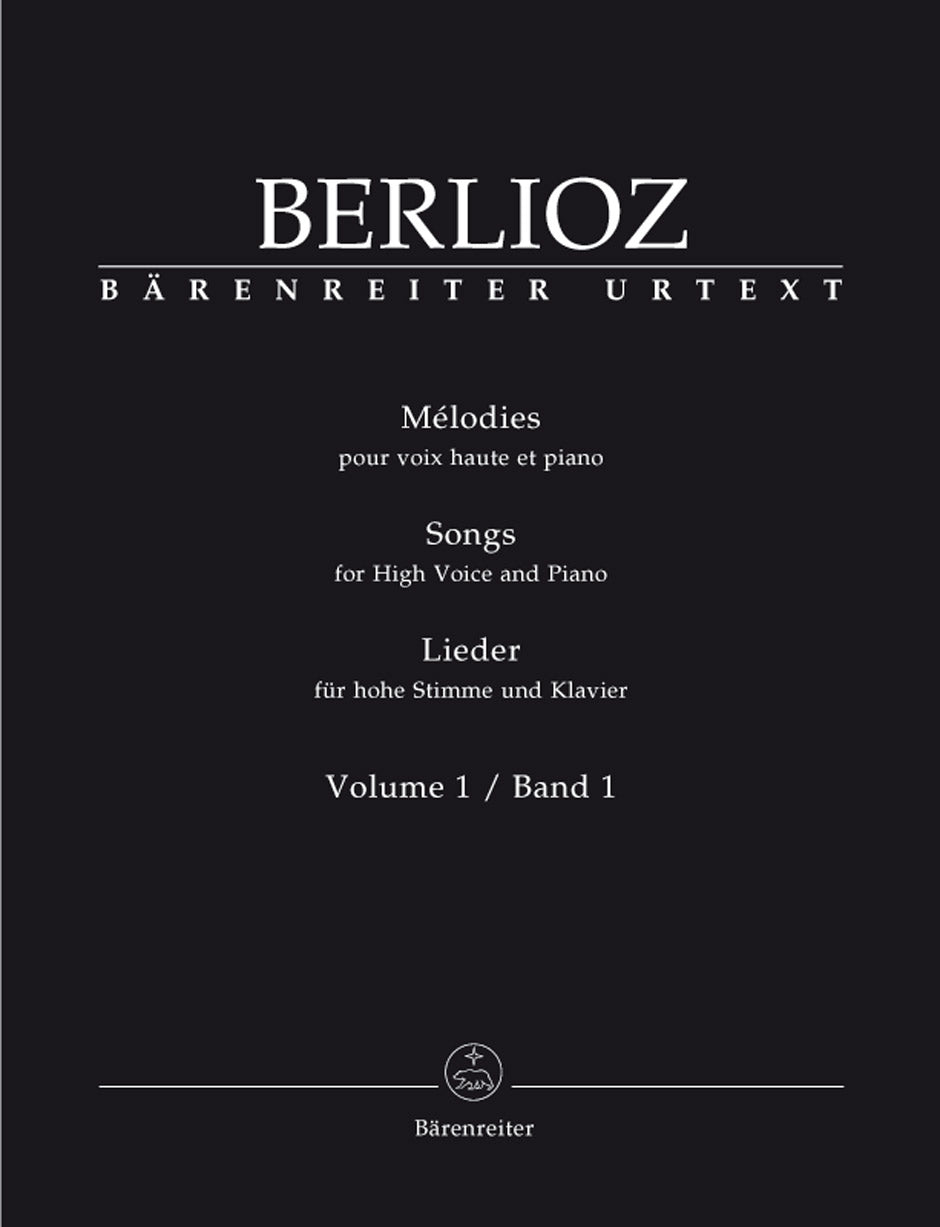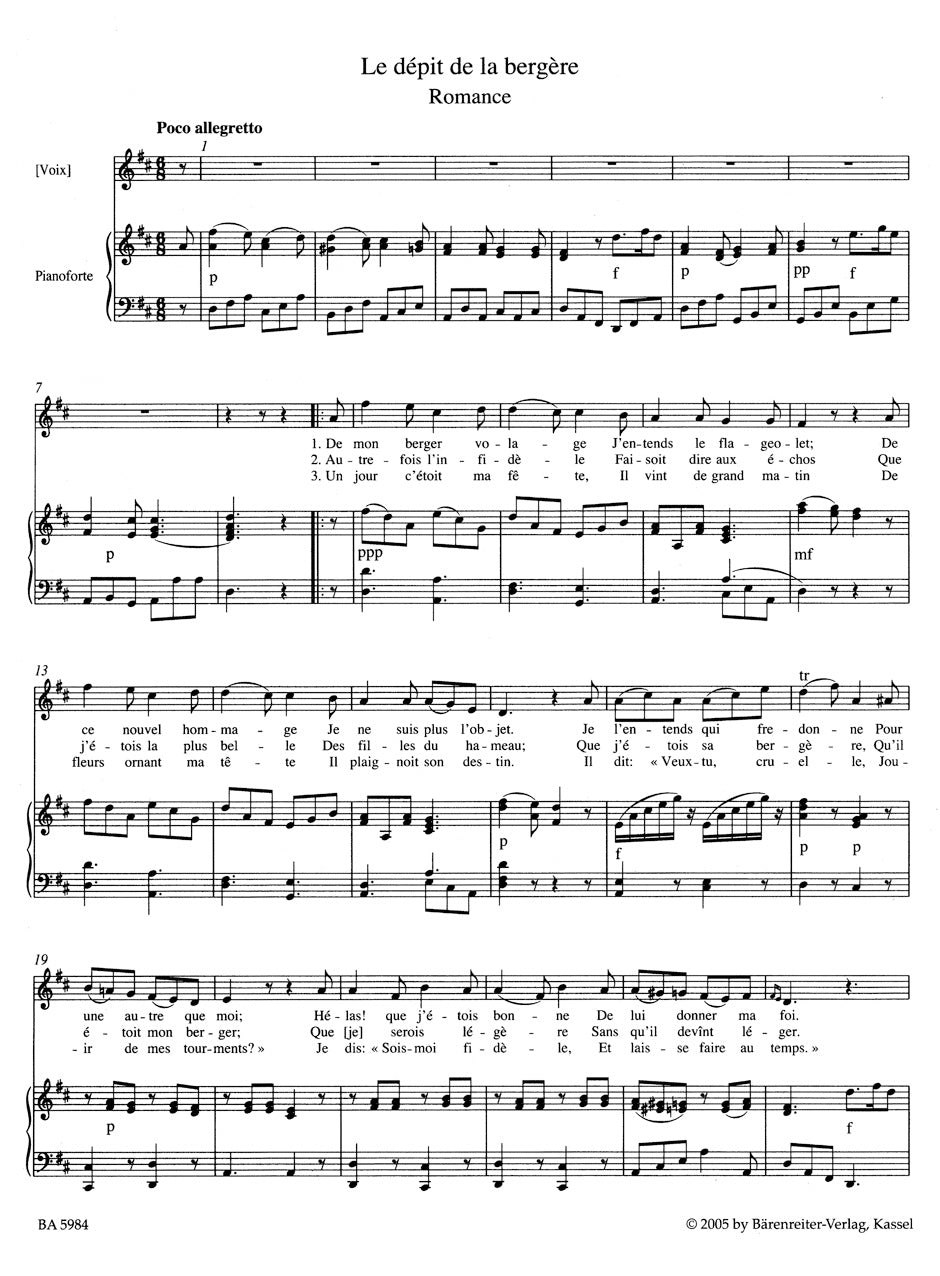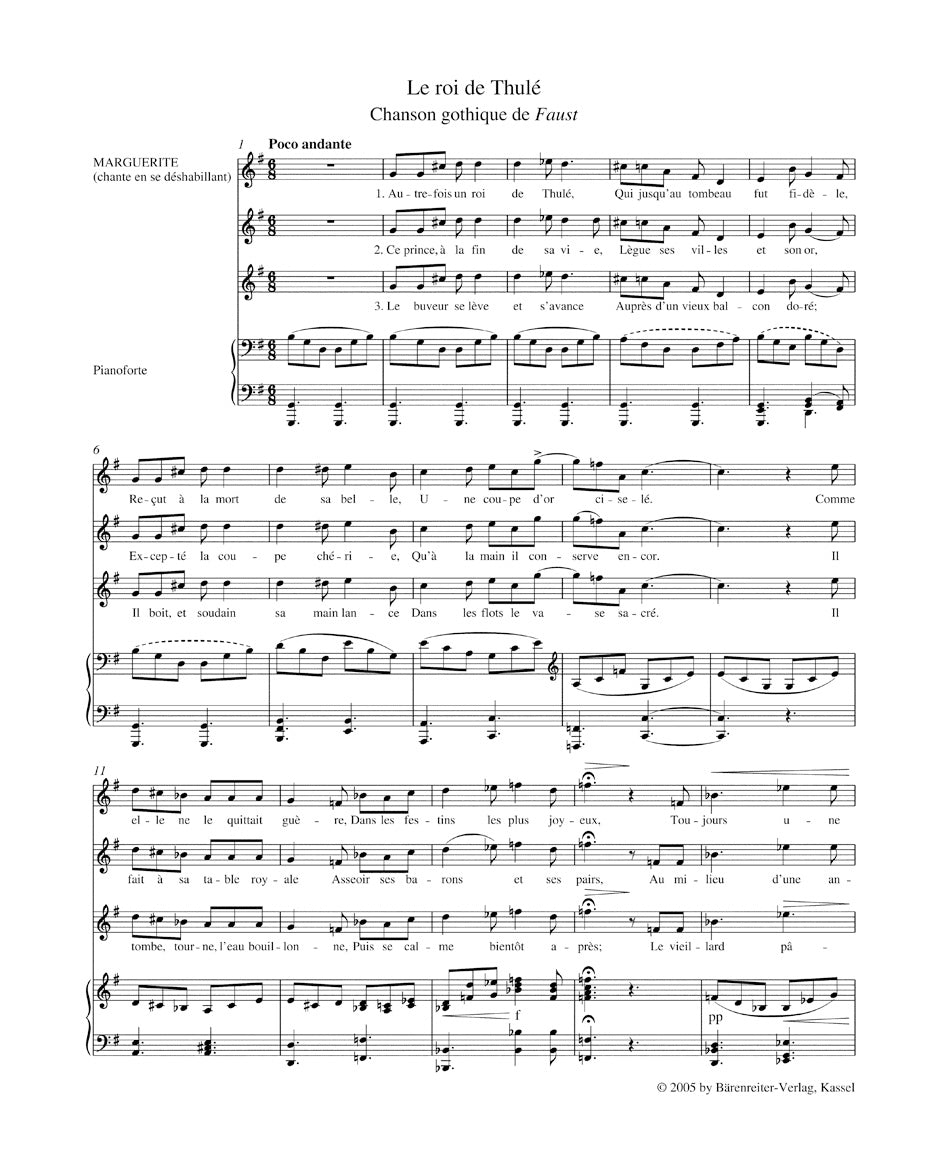Berlioz: Mélodies (Songs) for High Voice and Piano - Volume 1
Expected to ship in about a week.
- Composer: Hector Berlioz (1803-1869)
- Instrumentation: Piano, High Voice
- Work Languages: English, French
- ISMN:
- Size: 9.1 x 11.8 inches
- Pages: 92
- Urtext / Critical Edition
Description
Berlioz composed songs while still a child and in 1819, at the age of sixteen, he had a romance published at his own expense. Though he later turned primarily to large-scale forms, he never entirely abandoned the art song, for he was constantly inspired by poetry. His settings reveal a wealth of luxuriant melody that he viewed with pride to the end of his days. Many of his songs were subsequently scored for full orchestra. This volume contains songs from Berlioz's early and middle periods. It is based on the scholarly -critical Berlioz Edition which gathers together all of his songs for the very first time and presents them in a reliable text at the cutting edge of scholarship. A detailed preface discusses the genesis and transmission of each song and outlines its source materials. Each song is preceded by its words in the original language and in English translation. Thus, the volume provides an ideal foundation for rediscovering this romantic repertoire. - with the Urtext of the "Berlioz Edition - First scholarly-critical edition - Detailed preface (Eng ./ Ger.) - English translation to each song
Works:
- Le dépit de la bergère, H 7
- Le Maure jaloux, H 9
- Toi qui l'aimas, verse des pleurs, H 16
- Le roi de Thulé, H 33b, Op. 1, No. 6
- Le coucher du soleil, H 39, Op. 2, No. 1
- La belle voyageuse, H 42A, Op. 2, No. 4
- L'origine de la harpe, H 45, Op. 2, No. 7
- Adieu Bessy, H 46, Op. 2, No. 8
- Elegy
- Le pêcheur (1828)
- Chant de bonheur
- La captive, H 60, Op. 12
- Le jeune pâtre breton, H 124, Op. 13, No. 4
- Les champs, H 121, Op. 19, No. 2
- Je crois en vous, H 70
- Le chant des Bretons, H 124, Op. 13, No. 5
- Chansonette, H 73
Publishers use a lot of words to describe what they sell, and we know it can be confusing. We've tried to be as clear as possible to make sure you get exactly what you are looking for. Below are descriptions of the terms that we use to describe the various formats that music often comes in.
Choral Score
A score for vocalists that only contains the vocal lines. The instrumental parts are not there for reference. Generally, cheaper than a vocal score and requires multiple copies for purchase.
Facsimile
Reproductions of the original hand-written scores from the composer.
Full Score
For ensemble music, this indicates that the edition contains all parts on a single system (there are not separate parts for each player). In larger ensembles, this is for the conductor.
Hardcover
Hardbound. Generally either linen-covered or half-leather.
Orchestral Parts
Similar to a wind set, this is a collection of parts. In the case of strings, the numbers listed are the number of copies included, though generally these are available individually (often with minimum quantities required).
Paperback
When publishers offer multiple bindings (e.g. hardcover) or study scores, this is the "standard" version. If you're planning to play the music, this is probably what you want.
Performance / Playing Score
A score of the music containing all parts on one system, intended for players to share. There are not separate parts for each player.
Set of Parts
For ensemble music, this indicates that there are separate individual parts for each player.
Solo Part with Piano Reduction
For solo pieces with orchestra, this is a version that contains a piano reduction of the orchestra parts. For piano pieces, two copies are typically needed for performance.
Study Score
A small (think choral size) copy of the complete score meant for studying, and not playing. They make great add-ons when learning concertos and small chamber works.
Vocal Score
A score prepared for vocalists that includes the piano/organ part or a reduction of the instrumental parts.
Wind Set
For orchestral music, this is a collection of wind and percussion parts. The specific quantities of each instrument are notated.
With Audio
In addition to the printed music, the edition contains recordings of the pieces. This may be an included CD, or access to files on the internet.
With / Without Fingering (Markings)
Some publishers prepare two copies - a pure Urtext edition that includes no fingering (or bowing) suggestions and a lightly edited version that includes a minimal number of editorial markings.





